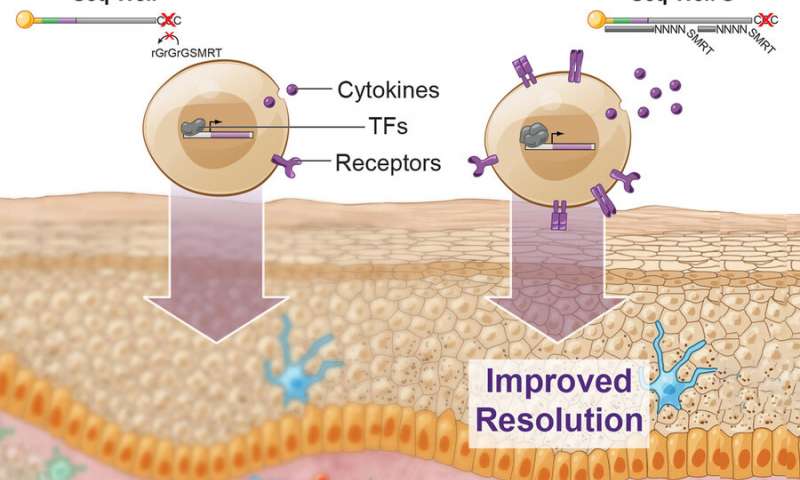HOME
Technique to recover lost single-cell RNA-sequencing information helps evaluate cell health

MIT researchers have greatly boosted the amount of information that can be obtained using Seq-Well, a technique for rapidly sequencing RNA from single cells. This advance should enable scientists to learn much more about the critical genes that are expressed in each cell, and help them to discover subtle differences between healthy and diseased cells for designing new preventions and cures. This image illustrates the improved resolution, right, using the new technique. Credits:Courtesy of the researchers. Edited by MIT News.
Sequencing RNA from individual cells can reveal a great deal of information about what those cells are doing in the body. MIT researchers have now greatly boosted the amount of information gleaned from each of those cells, by modifying the commonly used Seq-Well technique.
With their new approach, the MIT team could extract 10 times as much information from each cell in a sample. This increase should enable scientists to learn much more about the genes that are expressed in each cell, and help them to discover subtle but critical differences between healthy and dysfunctional cells.
"It's become clear that these technologies have transformative potential for understanding complex biological systems. If we look across a range of different datasets, we can really understand the landscape of health and disease, and that can give us information as to what therapeutic strategies we might employ," says Alex K. Shalek, an associate professor of chemistry, a core member of the Institute for Medical Engineering and Science (IMES), and an extramural member of the Koch Institute for Integrative Cancer Research at MIT. He is also a member of the Ragon Institute of MGH, MIT and Harvard and an institute member of the Broad Institute.
News Source